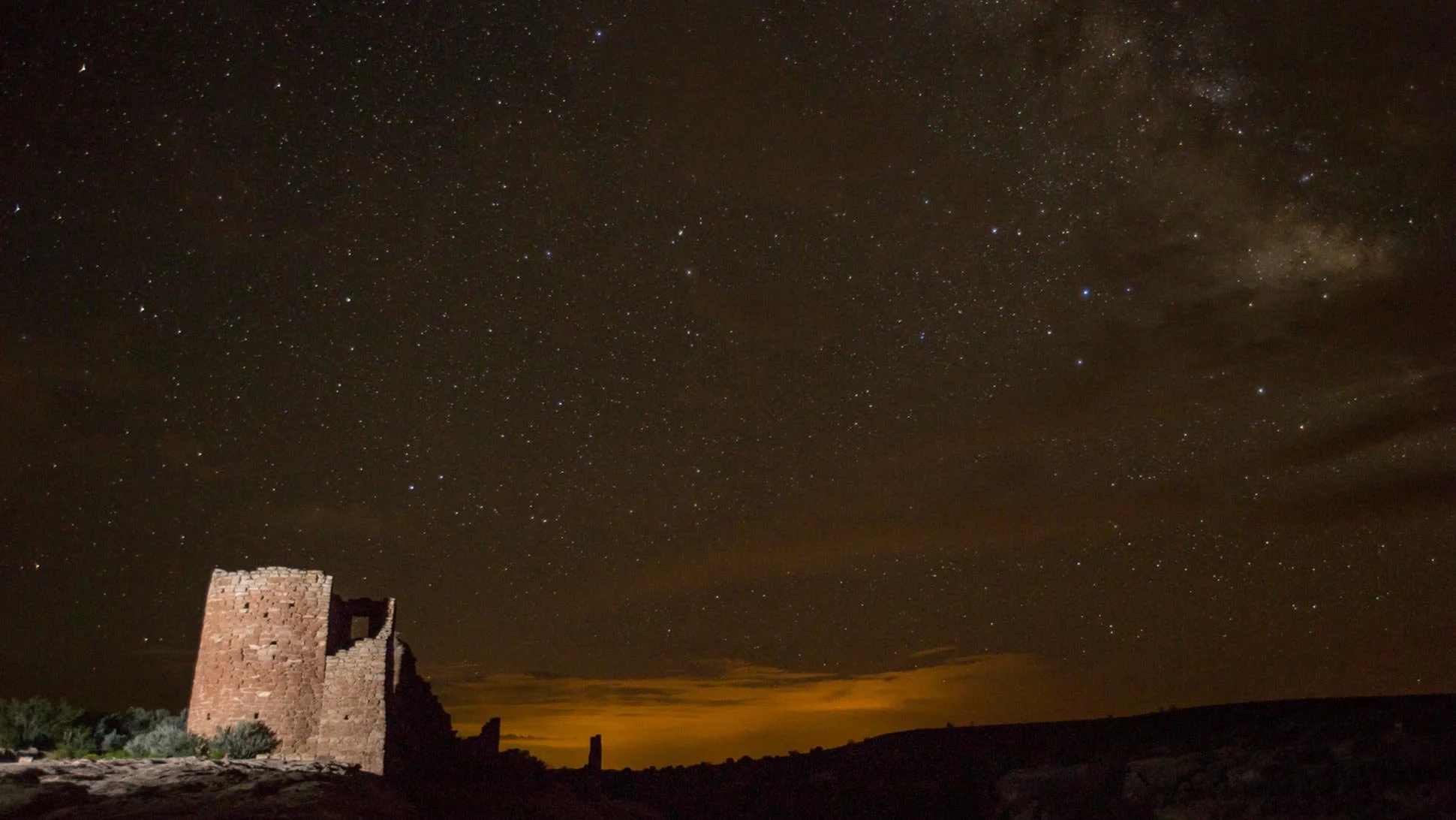Image source: Mesa Verde Country
Reading the Sky - Then & Now
In the ancient astronomical understanding of the sky, the blue sky was a transparent sphere surrounding Earth and given the title celestial sphere. The various points of light were fixed upon the sphere in their various places. The representations of this imagined structure are interesting. Perhaps your high school science class had one on display and you ‘get it.’
When we walk outside and look up from the city we most likely see the Moon and perhaps one or two stars or planets. To really see what is up there means a trip out to the Davis Mountains and the McDonald Observatory. Or settle for a drive up the shoreline of South Padre Island to enjoy the spectacle of the brilliance of those stars and planets and occasional fireballs or meteorites zipping through the atmosphere.
Facing south and looking towards the ‘lonely star’ Fomalhaut, a stargazer will be looking out of the [Milky Way] Galaxy. Fomalhaut is a first magnitude star, and only 23 light years distant. Use Pegasus and Fomalhaut to imagine the ecliptic midway between the two.
Then look overhead to locate the Great Square of Pegasus, near the zenith, which resembles a window into the void beyond the flat disk of the Milky Way Galaxy. The corner stars of Pegasus were mentioned in last week’s column as ‘bases’ for the baseball game being played by your favorite team. These stars are only second-magnitude stars all between 100 and 500 light years away. Because they are red and blue giants they are relatively bright to us even from many suburban neighborhoods. However, on SPI several other stars will emerge within the ‘window.’ As you are peering into this window you are looking deeper into space and farther into the past. The light from those stars has been traveling across vast distances for centuries to enter your eyes. Add a good pair of binoculars to your eyes and you will discover hundreds of stars within the window frame. Many other galaxies would be visible with an 8 inch telescope on a clear moonless night.
The summer triangle of the familiar swan, lyre, and eagle is drifting into the western horizon. The swan’s stars are also called the Northern Cross or Arthur’s sword. Cultures each had wonderful stories they told and re-told to successive generations and now to us. While checking out that area of the sky, look for Delphinus. And in case you don’t think early astronomers were not able to have fun doing their work, there are two stars in Delphinus that were not named until a catalog published by the Palermo Observatory in 1814. Named Sualocin and Rotanev. Since this was no known language, folks wondered and finally someone realized that astronomer Nicolas Venator was having fun with spelling his name backwards. Have you made up your own stories about our now-familiar constellations?
On your travels to and from work have you noticed how the Sun is moving southward along the horizon as it rises and sets? And that it is not as high in the sky as it crosses the meridian at noon? Horizon-based astronomy was very important to the people groups in our hemisphere. I recently watched a documentary about the Maya, Aztec, Toltec, and Inca cultures and how their magnificent splendid temple structures have significance to this perennial motion of our star. Many archeological sites in the American west follow this same understanding with the structures such as Chaco Canyon and Pueblo Bonito and the multiple Medicine Wheel structures in Wyoming, for example. I wish I were 50 again and could travel around to all these incredible archeoastronomy sites.
Were you able to catch any ‘falling stars’ this past week during the peak of the Orionid meteor shower? I know a few folks decided to go out the SPI to watch for them. If you saw some, let us know.
One last note: The South Texas Astronomical Society STEM scholarship is the beneficiary of the Annual Turkey Trot race held in Brownsville on November 22. It makes me very humble to have that scholarship for valley high school seniors to apply towards a STEM career is named for me. It is such an honor and I hope those of you who have students interested in STEM careers, or like to participate in these races that you will join the fun with us that day. Starsocietyrgv.org is the website to get more information.
Until next week, KLU and through that window of Pegasus.

